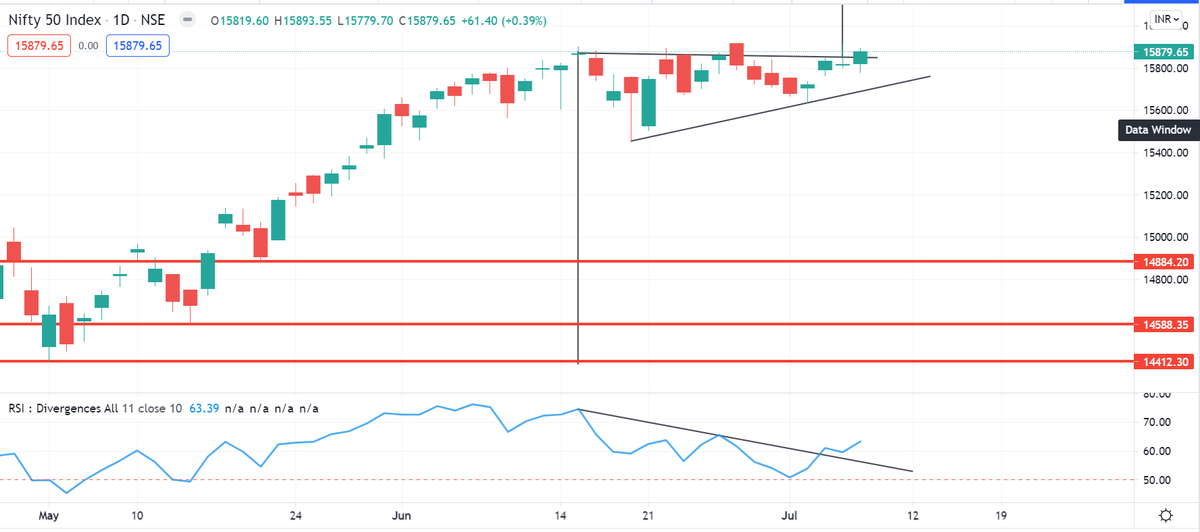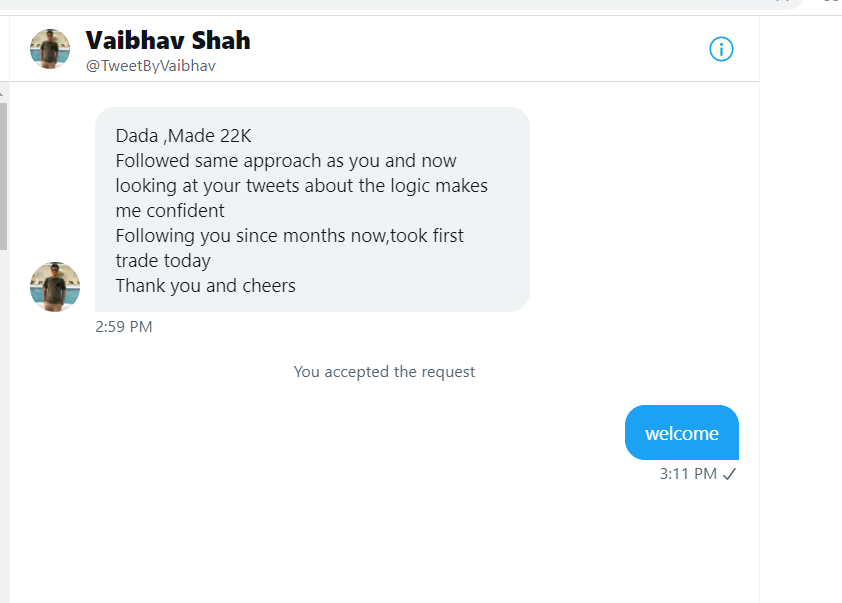
May be in small pressure on the spread at opening, will adjust as required. Quite a few asked for the adjustment logic, will share if i require to do this.
Plan is : If opens lower, will sqoff the sold leg fully, sqoff 50% of the bought leg, will short higher OTM 50%
Plan is : If opens lower, will sqoff the sold leg fully, sqoff 50% of the bought leg, will short higher OTM 50%
https://twitter.com/SubhadipNandy16/status/1412713820930252802
Sqedod off the 36000ce sold leg
sqed 50% of the 36400ce buy trade
shorted 36500ce rest 50% converting to 36400-500 bull call spread
Sqed 36500 a bit lower and shorted 36600ce
Trade now a bull call spread 36400-36600. Defined risk trade now
sqed 50% of the 36400ce buy trade
shorted 36500ce rest 50% converting to 36400-500 bull call spread
Sqed 36500 a bit lower and shorted 36600ce
Trade now a bull call spread 36400-36600. Defined risk trade now

Trade only at a Rs.1000 loss despite view absolutely not working out / totally wrong.
This is the beauty of a backspread . Adjustment does not require putting in more capital, trade always remains limited risk
This is the beauty of a backspread . Adjustment does not require putting in more capital, trade always remains limited risk

Be aware a backspread is not simple as it looks. A knowledge of greeks is need to understand when to put on this trade. what strikes, what expiries and how to adjust when in trouble. Adjustments methods vary, but no extra capital should be used and trade must remain defined risk
• • •
Missing some Tweet in this thread? You can try to
force a refresh











